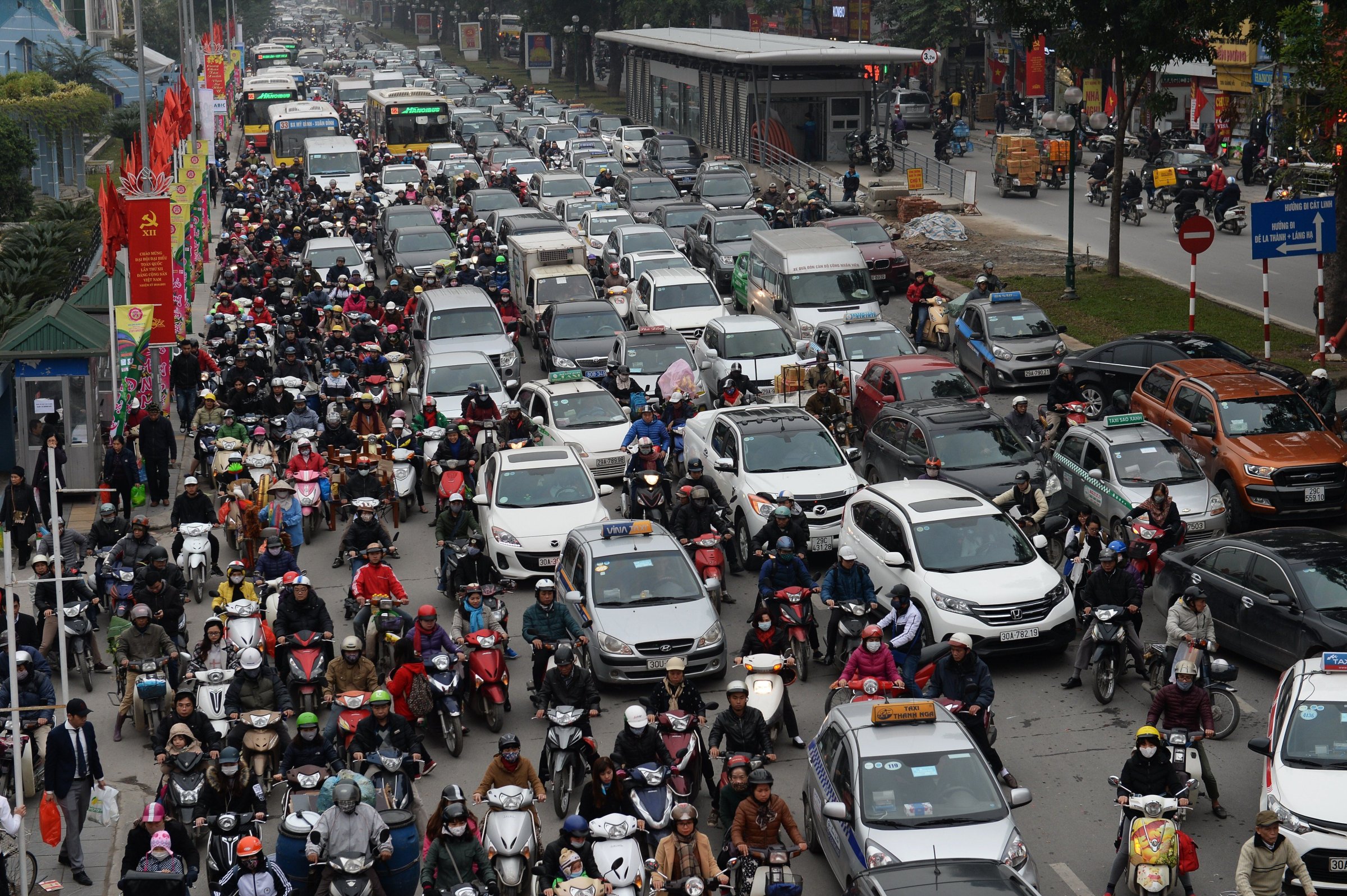
Vietnam’s government plans to rid the congested streets in downtown Hanoi of motorbikes by 2025 to make room for more buses and metro lines — but residents are less than open to the change.
There are currently around half a million cars and 5 million motorbikes on the Hanoi streets, and the government estimates that economic growth will increase those numbers to 1 million cars and 7 million motorbikes by 2020. The streets are already crowded, and air pollution is bad enough that the Real Time Air Quality Index classifies the city as “unhealthy.”
“The traffic situation in Hanoi will become extremely complicated in the next four to five years,” Hanoi City Chairman Nguyen Duc Chung said at a public development meeting. “So we really need a timely solution to this.”
That solution includes building highway, bridges, tunnels, bus stations, along with doubling the number of buses and adding six new metro train lines by 2030. But it also includes banning motorbikes from the city center within ten years. In a city where less than 10 percent of residents use public transportation, the transition would be extreme.
In addition to not wanting to part with an integral mode of transportation, The Guardian reports that some see the move as unfair to those who cannot afford their own cars. Many are skeptical that the construction of the first two new metro lines will happen on schedule by 2020, since they have already faced delays.
More Must-Reads from TIME
- Donald Trump Is TIME's 2024 Person of the Year
- TIME’s Top 10 Photos of 2024
- Why Gen Z Is Drinking Less
- The Best Movies About Cooking
- Why Is Anxiety Worse at Night?
- A Head-to-Toe Guide to Treating Dry Skin
- Why Street Cats Are Taking Over Urban Neighborhoods
- Column: Jimmy Carter’s Global Legacy Was Moral Clarity
Write to Julia Zorthian at julia.zorthian@time.com